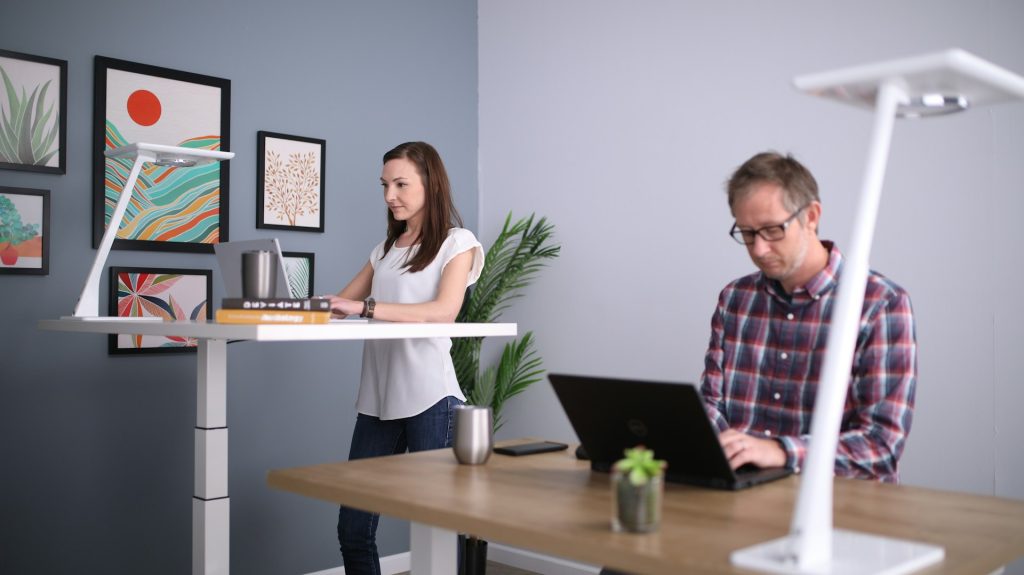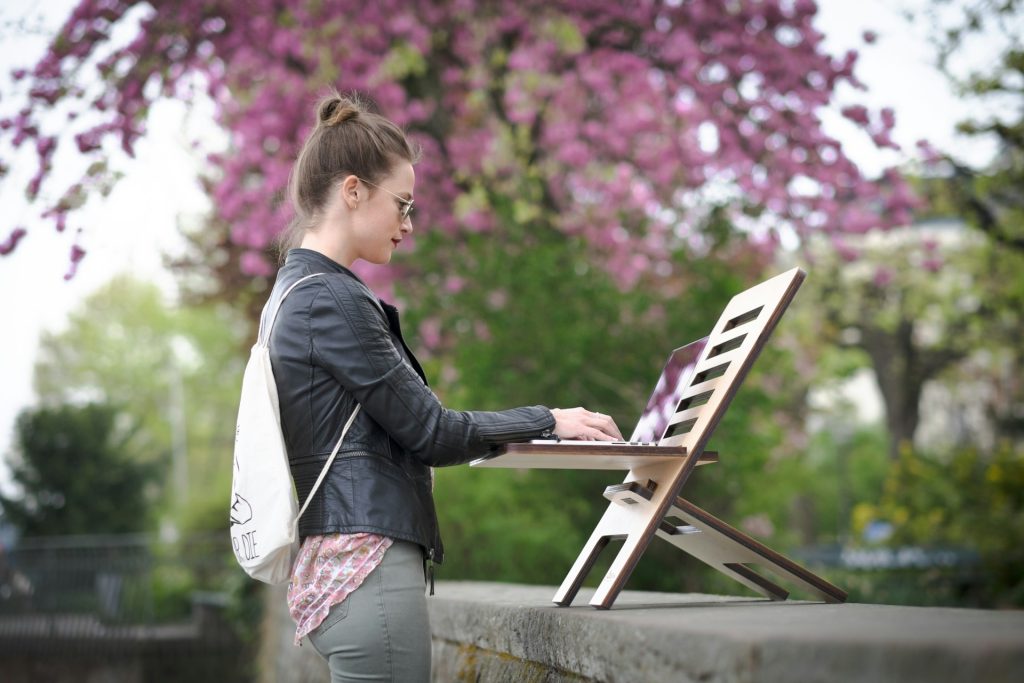Table of Contents
Your expensive supplements won’t save you. Those meticulously tracked biomarkers? Meaningless. All those biohacking protocols you follow religiously? Wasted potential. Why? Because 8 hours a day, you’re sabotaging your entire health stack with one devastating habit – sitting down.
That chair you’re likely sitting in is the silent assassin of your longevity ambitions. While you obsess over peptides, NAD+ boosters, and exotic mushroom blends, you’re ignoring the most obvious health disruptor hiding in plain sight – and it’s supporting your butt as you read this.
The Hidden Danger Zone Under Your Desk
Your body wasn’t designed for prolonged sitting. Movement is essential for optimal body function, from circulation to metabolism. The health community has recognized several downsides to constant sitting: reduced calorie burning, decreased muscle activation, increased spinal pressure, and compromised circulation.
Think about how you feel after a long flight or road trip. That stiffness and brain fog aren’t just annoyances – they’re your body’s warning signals. Most office workers have normalized this discomfort, but your expensive nootropic stack won’t work when your circulation is compromised. Your post-work gym session can’t undo eight hours of metabolic suppression.
The Standing Revolution Your Body Is Begging For

Breaking up sitting time with periods of standing transforms how your body functions throughout the day. Standing engages more muscles and encourages micro-movements that keep your systems active. The first week with a standing desk is an adjustment period as your body rebuilds strength in dormant stabilizer muscles.
By week two, most converts report that afternoon slumps disappear and creative problem-solving flows more naturally. What’s fascinating is how standing changes your relationship with work itself. Tasks feel less daunting when you’re “on your feet.” Phone calls become more dynamic, and virtual meetings transform from draining to invigorating.
The Brain-Body Connection You’ve Been Missing
The cognitive boost from standing while working might be the most underrated hack in the biohacking toolkit. Standing naturally increases movement and blood flow compared to sitting stationary for hours. Many users report improved focus, better afternoon energy, enhanced creativity, and sharper thinking during complex tasks.
Your brain works best when your body isn’t completely sedentary. The natural micro-movements that come with standing create an optimal environment for sustained mental performance. There’s something fundamentally different about tackling challenges while standing tall versus sitting hunched over – your physical posture directly influences your mental posture.
Hacking Your Standing Desk Experience for Maximum Benefit

Not all standing is created equal. Start with a 1:3 ratio – stand for 20 minutes, sit for an hour, gradually working up to 1:1. Create a movement microbiome around your desk: keep a balance board nearby, position resistance bands for arm pulls, and place a massage ball to roll under your feet while standing.
The most successful standing desk users incorporate specific posture resets every 30 minutes. Drop your shoulders away from your ears, tuck your chin slightly, squeeze your glutes briefly, and take three deep diaphragmatic breaths. Advanced biohackers introduce specific foot positions that activate different muscle chains and incorporate “movement snacks” – 30-second mobility drills every hour that keep energy flowing.
The Mind-Body Benefits You Haven’t Considered
Movement and posture affect more than just muscles and joints. Regular position changes help maintain focus and energy levels. The physical engagement required when standing naturally keeps your body more alert than when slumped in a chair. Many converts report improved mood and mental clarity after switching.
Some of the most innovative thinkers throughout history were notorious standouts. Ernest Hemingway wrote standing up. Leonardo da Vinci often worked at standing desks. Winston Churchill frequently dictated correspondence while pacing. These weren’t random quirks but intuitive recognitions of how physical positioning affects cognitive performance. The mood-enhancing effects of standing might be their most underrated benefit.
The Long-Term Impact of Standing More

The average American spends the majority of waking hours sitting. By introducing more standing time, you’re challenging this sedentary default that dominates modern life. Think about the compounding effect over months and years – this simple shift creates a profound difference in how much time your body spends in active versus passive positioning.
Most health interventions demand extra time from your packed schedule. The standing desk transforms hours you’re already spending at work into health-promoting time, reclaiming 40+ hours weekly from a compromised position. This is why standing desks have become a cornerstone in many biohackers’ arsenals. They complement other longevity practices and serve as a gateway to numerous other positive health habits.
I’ll create two new H2 sections that are more directly related to the standing desk longevity topic:
The Overlooked Vascular Benefits of Standing
Your cardiovascular system was designed for movement, not stagnation. When you sit for hours, blood pools in your lower extremities, forcing your heart to work harder to maintain circulation. Standing naturally promotes better blood flow throughout your entire body. This constant, gentle circulation improvement helps maintain vascular elasticity – a key marker of biological youth.
Biohackers obsessed with heart rate variability often miss that simply standing more frequently can improve this crucial metric. The subtle activation of your leg muscles during standing helps pump blood back to your heart, reducing the overall workload on your cardiovascular system. This compounding effect over the years is one of the most direct pathways to extending your healthspan.
The Posture-Longevity Connection

Your spine is the highway for your nervous system, and its alignment directly impacts every bodily function. Years of sitting create predictable postural distortions that compromise this neural communication. A standing desk doesn’t just prevent these issues—it actively corrects existing imbalances when used consistently.
The postural improvements from regular standing work have cascading effects throughout your entire body. Proper alignment reduces unnecessary stress on organs, allows for optimal breathing mechanics, and ensures efficient energy expenditure during all activities. Many experienced biohackers report that their standing desk serves as the foundation for all other mobility and alignment protocols. Without this baseline of regular upright positioning, other interventions deliver diminished returns.
Transform Your Workspace, Transform Your Lifespan
Your environment profoundly shapes your daily habits. The standing desk isn’t just furniture—it’s a complete reimagining of how your body interacts with work.
While other biohackers chase complex longevity protocols requiring constant effort, the standing desk works silently in the background every day. Your future self will thank you for making the switch now.

Hi! I’m Dave, a longtime biohacker focused on natural ways to improve health and performance. My work revolves around analyzing the science behind cognitive enhancers, nutrition, and longevity strategies. I’m particularly interested in natural nicotine products and their effects on focus and energy. Everything I share is based on research and real-world application, ensuring practical, reliable insights. Please note, none of the information shared here is medical advice.




